Zeiss Ikon Contina II 524/24
Zeiss Ikon released 2 different cameras in the 1950s by the same name "Contina II". One is a folder with a rangefinder (model 524/24) and the other is a non-folder with a selenium light meter (model 527/24). Between the two, I am satisfied to have acquired the folder version, which looks cooler and is more functional with a rangefinder (Sunny 16 works just fine!).
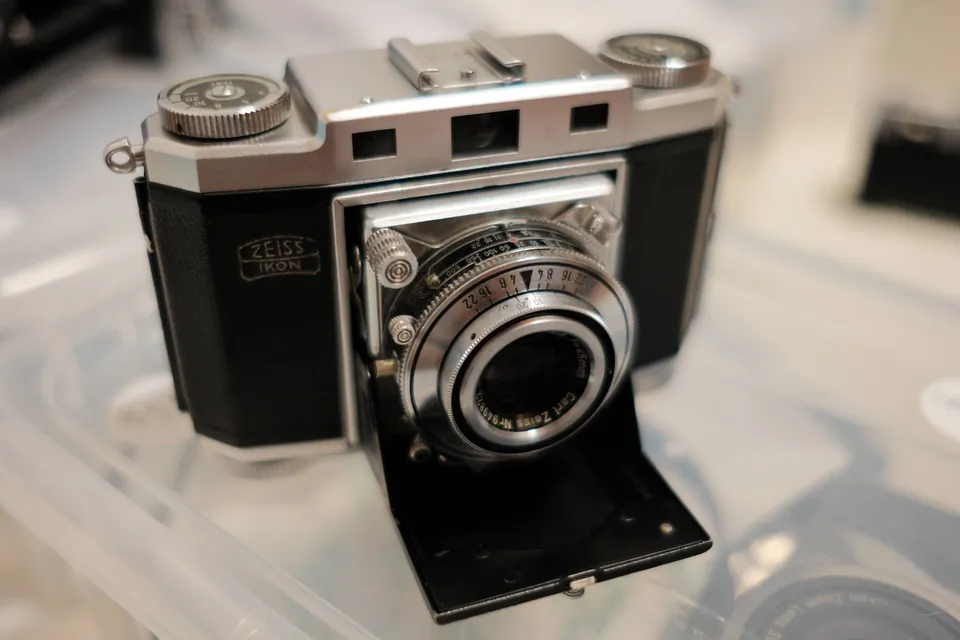
My particular version of Contina II is equipped with a 2.8/45mm Tessar lens and a Syncho-Compur shutter, produced between 1951 and 1952. Another version of the folder Contina II with 3.5/45mm Novar and Prontor SV (S for flash synchronized, V for self-timer) shutter stayed in production until 1955. I'd be thrilled if they had combined the superior Tessar lens and a Prontor SV shutter that has a self-timer. Well, I don't dare to try a 70 year-old self-timer though.
Since I began regularly shooting film photos, I have been guilty of buying various crappy cameras.
Why can't you pay a bit more for a proper, high quality model?
— many of my friends
OK, here is one good camera produced by the renowned German camera maker Zeiss Ikon. I spotted it when I was casually browsing Carousell, seemingly as part of someone's endeavor to get rid of the many cameras he'd acquired over the years. The camera appeared well-used and well-preserved. The glass looks clean, the body showed reasonable signs of use and no big obvious defects. A Folder version of Contina II is quite rare online as well and the price was decent (in Hong Kong—it's still substantially more expensive than the flea market finds overseas)
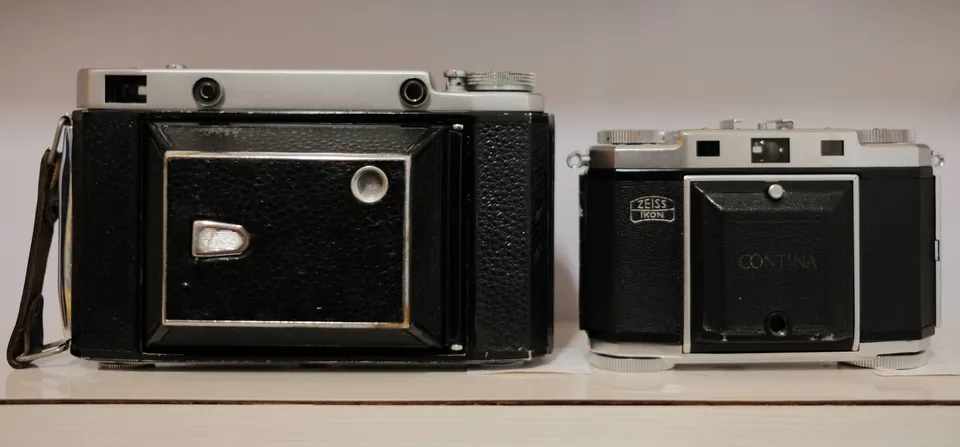
The camera is built like a tank in a metallic shell, yet compact enough to fit nicely in my palm. To open the camera, a knob on the front cover can be slid down to allow the cover to drop down like a drawbridge , and the cover will click into place when fully opened. When unfolded, the shift in center of gravity doesn't seem to affect the shooting experience. The front cover, now at the bottom, can sturdily support the camera when held.
In fact, there is a 1/4" tripod socket on the front cover, proving the hinge is strong enough to stay open and support the weight of the entire camera. Originally the camera would have come with a little screw in place for the tripod socket, which was missing when I got the unit. Not sure if it is strong enough to hold up a camera with a flash unit on the cold shoe.
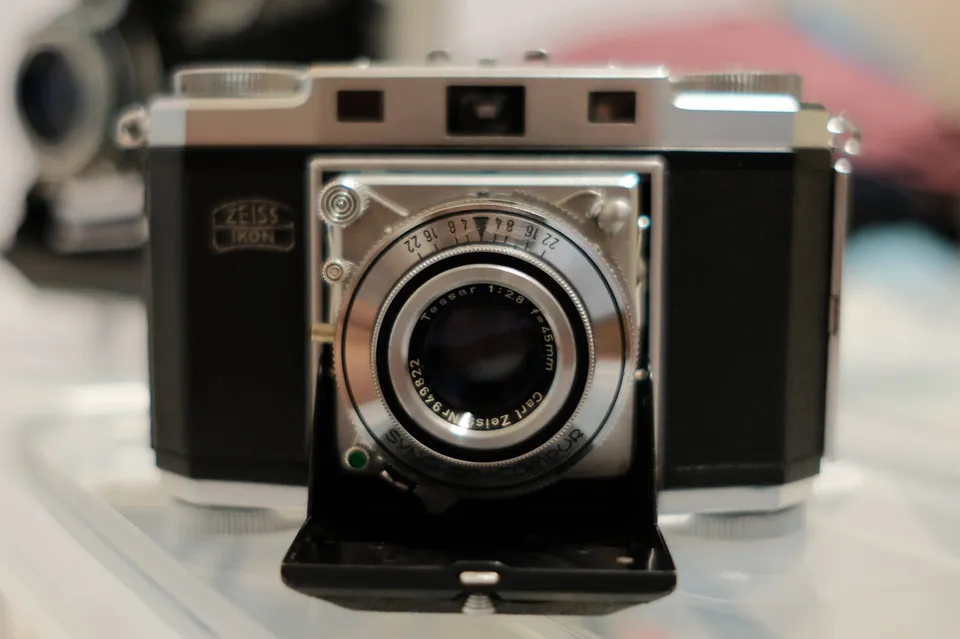
The camera back unlocks by pulling down an L-shaped metal strip, once opened the chamber is similar to typical 35mm cameras. One chamber holds the 135 film canister, another holds a non-removable take-up spool, two gears sticking out where the film would travel through to drive the frame counter at the bottom and to unlock the double-exposure prevention mechanism.
There are 4 dials in total. One bottom dials for advancing film, and the other for rewinding that are clearly marked by "A"/"R" characters and arrows for rotation direction. The bottom dials rotate with a notably pleasant sound (some of the nicest turning sound, amongst those advancing film by a dial), always encouraging me to advance the film for the next shot. Top-right dial operates the decoupled rangefinder, where a small circular window shows 2 yellow patches to be aligned for rangefinding. Top-left dial is simply a film type memo in DIN °.
Once the film is advanced and yellow patches on the rangefinder are aligned, copy the distance indicated on the rangefinder dial to the focusing ring at the front. Shutter speed and aperture can be set before or after cocking the shutter, best do so before instead of after (required if shooting at 1/500s), as typically advised for Compur-type leaf shutters. Cock the shutter by pressing down the small knob, then the big knob may be depressed to release the shutter. Cable release thread is on the other side of the shutter, an interesting design.
Thus, a shot is taken.
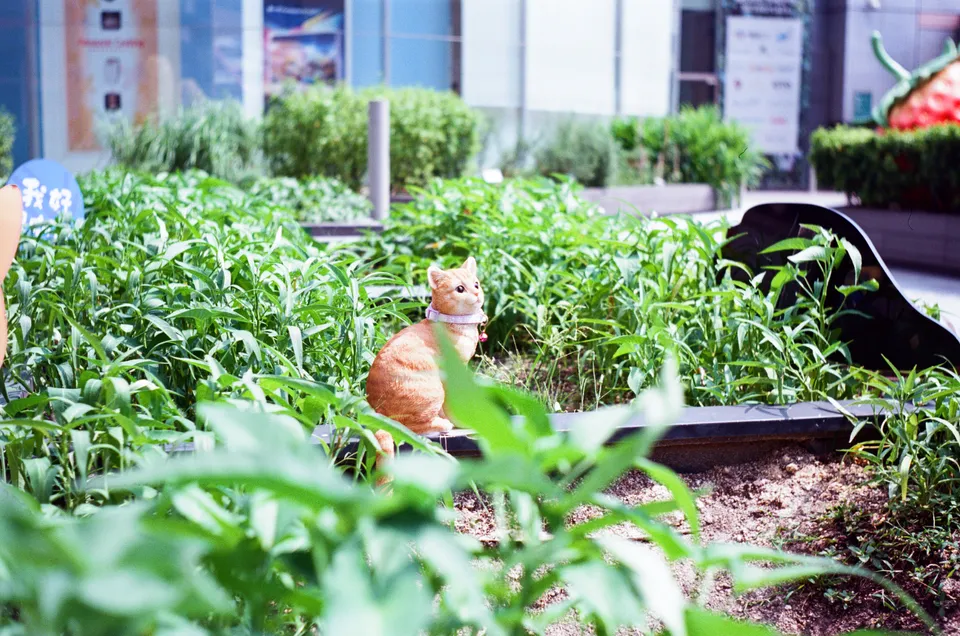
Cameras in the 1950s commonly had a red dot on the aperture and focusing ring. Many of the consumer-focusing cameras of the decade have no focusing aid. Contina II is the only camera in the Contina line that comes with a built-in rangefinder. For the beginners/casual photographers who only want to take photos during vacation or parties, it's counterproductive for them to spend time mastering the guess-focusing technique. Even on Contina II, it's a hassle to transfer the rangefinder result to the focusing ring, if the user remembers to do that.
Hence comes the red dot presets.
This is an easy, but reliable way of making snapshots.
…
As the CONTINA 24x36 mm can be closed no matter how it is focused, it is rather convenient to arrange the red dot setting beforehand so that the camera is always prepared for instantaneous use immediately after opening.
— Contina II user manual
When taking a snapshot in haste (wife and kids are waiting, or trying to photograph a street scene), the photographer can pre-focus the camera at the red dot setting by rotating the aperture and focusing rings to align with the red dots. This sets the aperture to between f/8 and f/11, and anything between 2.5m and infinity can be reasonably in focus.

However they are only reasonably in focus. To get the sharpest image, careful rangefinding using the built-in rangefinder is still essential. I made the mistake of falsely believing the Tessar lens is sharp enough to capture the entire range, but as you can see in the above image it's not the case. When distance is carefully measured with a rangefinder, the Tessar lens does live up to its reputation of being sharp and clear.
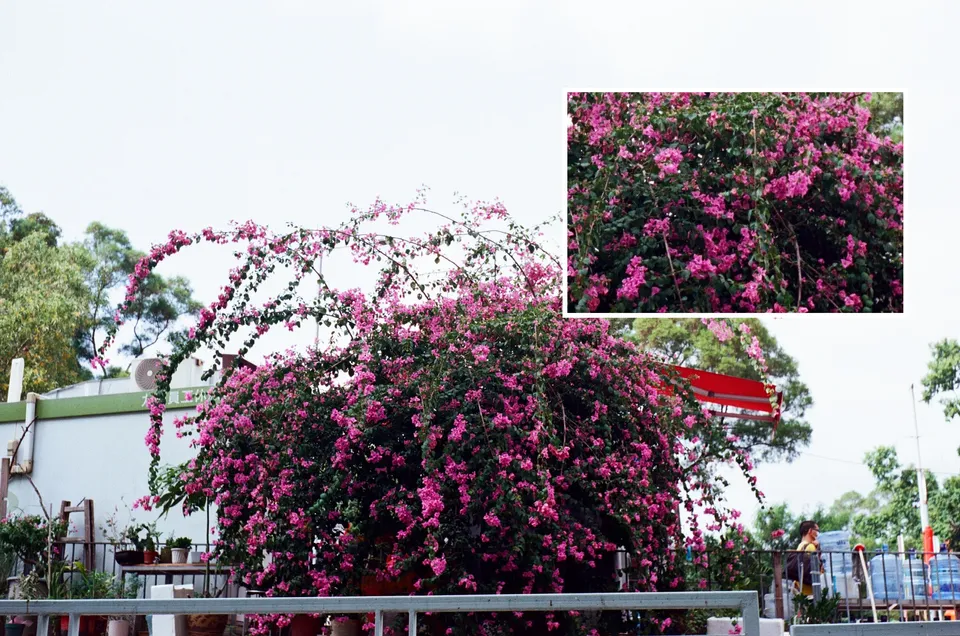

Another notable feature of the camera is its ergonomics. Contina II is actually symmetrical and all controls are on the front. The photographer can comfortably hold the camera body with the left hand, then use the right hand to support the front and trigger the shutter release. As the shutter release can be easily depressed along the rim of the shutter, camera shake is minimized (I got only one shaky shot out of an entire roll).

A good camera is one that's pleasant to shoot with. Like the Agfa Optima 1535, I can imagine myself taking Contina II out to shoot casually and they'd never disappoint. The struggle would be to find the right light and composition to shoot, rather than fighting with the control and ergonomics of the camera like one does with the KMZ Moskva-5.
